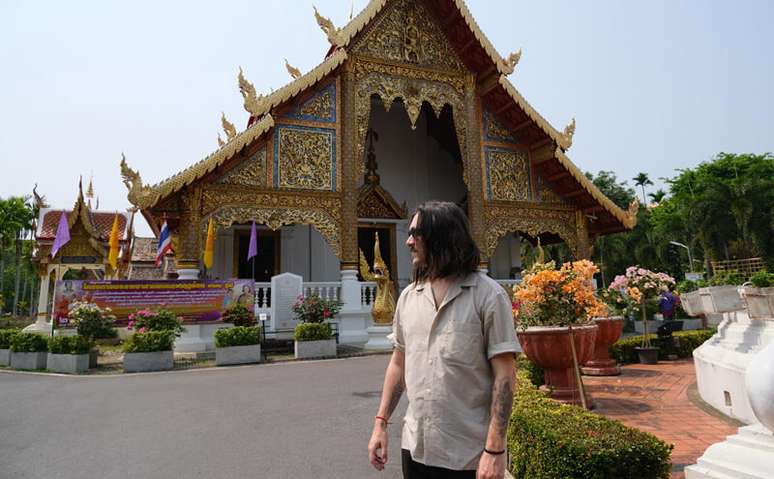The pandemic opened up the use of remote working, but digital nomadism arrived much earlier
A digital nomad is someone who uses technology to work remotely while traveling the world. They are able to work from anywhere with an internet connection, enabling them to live a more flexible and independent lifestyle.
Many digital nomads are freelancers or entrepreneurs who offer services in marketing, graphic design, programming, translation, among others, while others work for companies remotely.
The thing is, the pandemic has opened up remote work, but digital nomads have been on the road before. Today, with good planning, you can work anywhere in the world.
How to become a digital nomad?
If you want to become a digital nomad, here are some steps you can follow:
- • Define your skills
First, you need to decide what skills and services you can offer as a digital nomad. You may have a particular skill, such as software development, writing, graphic design, or you may have multiple skills that allow you to work on different projects.
- • Build your network
Build your network of contacts and customers using online platforms such as LinkedIn and social media. Join online groups related to your niche, offer your services, and seek out remote work opportunities.
- • Become a freelancer
If you don’t currently work remotely, start looking for freelance jobs. There are several freelance sites where you can find work such as Upwork, Freelancer.com, among others. Start building your reputation and portfolio.
- • Learn to manage your time
As a digital nomad, it’s important that you are able to manage your time effectively. You need to be organized and prioritize your activities to ensure you are able to meet customer requests while travelling.
- • Get the right tools
You will need a good computer and a reliable internet connection to work as a digital nomad. In addition, there are several tools that can help you manage your work, such as task management applications, video conferencing software, among others.
- • Start traveling
Finally, start traveling and working remotely. You can choose to work in a coffee shop, library, or coworking space while you’re on the go. But it is important to plan ahead and have an adequate budget to support yourself during the trip.
Chat with a classic digital nomad
If you want to become a digital nomad, you need to have the skills, build your network, learn to manage your time, acquire the right tools, and most importantly, be ready to work hard to achieve your goals. The digital nomad lifestyle can be rewarding and exciting, but it requires planning and dedication to succeed.
This is exactly the case with Matthew de Souzaa 34-year-old from Santa Catarina who adopted digital nomadism in 2015. The book “Digital Nomad: a guide to living and working how and where you want” was born from his experiences, launched in 2019 and finalist of the 2020 Jabuti Prize in the Creative Economy category .
Today he normally works 6 hours a day in Thailand. Matheus graciously replied to Terra to tell us about digital nomadism and life in Asia.
Earth ― First, the question you’ve already answered a lot in the last few years: What exactly was the process like in 2015 when you decided to go digital nomadism?
Matteo D’Souza 2015 was the year I got the idea that my work could be done from literally anywhere in the world with internet access – I just had to agree with my bosses. At the time, I was working as a marketing assistant at a college in inland Santa Catarina. He arrived at 12:30 and left work only at 22:00. I also asked about working from home, but heard something along the lines of “if we release it for you, we’ll have to release it for everyone” – which is understandable since remote working wasn’t that widespread yet. I remember one day at work I came across the book “Work 4 Hours a Week”, by Tim Ferriss, which is not exactly a book on digital nomadism, but it ended up becoming a kind of bible on the subject because it deals with this business to work from literally anywhere in the world with Internet access. Even though everything seemed a bit utopian at that first contact, I started looking for types of work I could do online. At the turn of 2015 and 2016 I had my first freela as a copywriter – thanks to my contents produced on the professional network – and by the end of the same year I was already earning more with freela than as a CLT. After setting aside six months of my salary as a CLT, I finally resigned in 2017 and left for Mexico, my first destination as a digital nomad. I’ve been on the road since then: 30 countries since 2017, some more than once.

Earth ― You are currently in Thailand. How is your daily work?
Matteo D’Souza I think the first point here is to demystify what digital nomadism is – and what it isn’t. If you Google “digital nomad” you’ll find several images of professionals presumably working on their expensive laptops on the beach sand. This is definitely not my routine. I’m not a full-time tourist, and even though I’m currently on an island paradise in Thailand, that doesn’t mean my office is literally on the beach. I generally stay between 2 and 3 months in destinations, which means there is no rush to visit all the tourist attractions in cities – like a traditional tourist buying a package in a travel agency to spend 5 or 7 days in one place.
I’m currently working on my second book, a collection of travel chronicles with no release date yet. I wake up around 6:30, read for 1 hour and write from 7:30 to 10:30. After that, depending on the day, I go to the beach or do everyday things – supermarket, cleaning, washing clothes, etc. While travelling, most of my meals are usually home cooked ― I usually stay on Airbnb with a kitchen and other household items ― but since eating on the street is very cheap in Thailand, I went out for lunch almost every day .
After lunch I do things that pay the bills: I answer emails, send budgets, issue invoices, prepare lessons, plan and produce content for social networks, write my weekly newsletter. On a good day, I stop work around 5pm. When I have meetings, I go later due to the time difference – I’m 10 hours ahead of Brazil.
Leisure, with few exceptions, works the same way it does for non-digital nomads: on weekends – except that I cut Fridays out of my work week; but sometimes I still need to work, like today, when I’m awake to answer this interview – here it is 00:12 and I’m awake because I have a meeting at 00:30.
When I started the nomadic life, I worked exclusively as a copywriter: writing for company blogs, ghostwriting jobs for famous CEOs on LinkedIn, that sort of thing. Today my sources of income are more diverse. I teach online courses, offer in-company training, lecture, and post on social media.
Earth – If you were to publish the book “Digital Nomad” today, which chapters and themes would you include that are not in the original version?
Matteo D’Souza I loved the question. “Digital Nomad” was written in 2018 and published in 2019, i.e. before the pandemic. When I adopted this lifestyle and work, in 2017, you’ll hardly find a nomad on the street who isn’t self-employed; freelancers, self-employed workers and entrepreneurs. Precisely for this reason, the work has greater attention towards this type of professional. However, the pandemic has shown that it is possible to be a CLT and still have the geographic freedom to do your work from literally anywhere in the world with internet access, even if many managers think otherwise and are demanding that their employees return to the office.
Perhaps I would also devote a chapter to talking about asynchronous communication, one of the biggest challenges for remote teams in companies – which has manifested itself in the pandemic with the so-called “Zoom fatigue”.
There is also the issuance of specific visas for digital nomads. Since 2020, several countries have launched specific visas for foreign professionals working remotely. On the one hand this is nice, it shows that countries have finally understood that this type of traveler is important for the local economy, on the other hand it doesn’t make much sense, since these visas offer residency for at least 1 year – and nomadic, at the origin of the word, it has no fixed residence, it is always on the move, but I think that is a topic for a second edition of the book.
Source: Terra
Rose James is a Gossipify movie and series reviewer known for her in-depth analysis and unique perspective on the latest releases. With a background in film studies, she provides engaging and informative reviews, and keeps readers up to date with industry trends and emerging talents.






